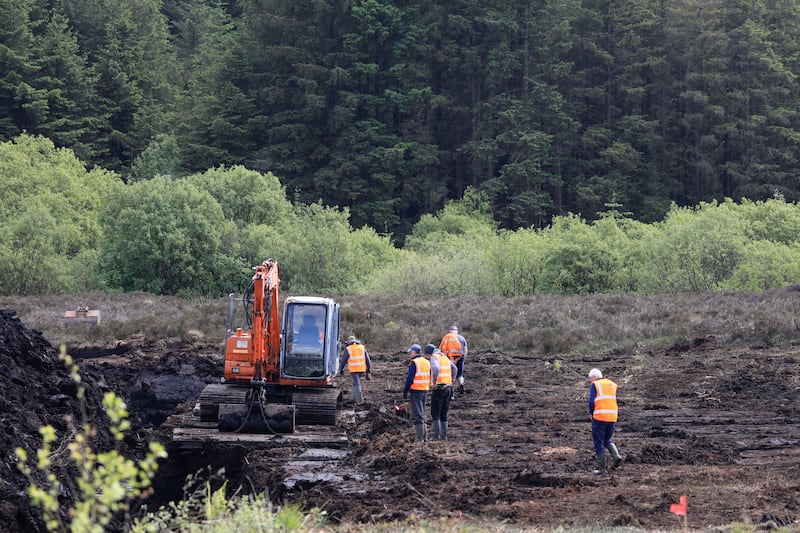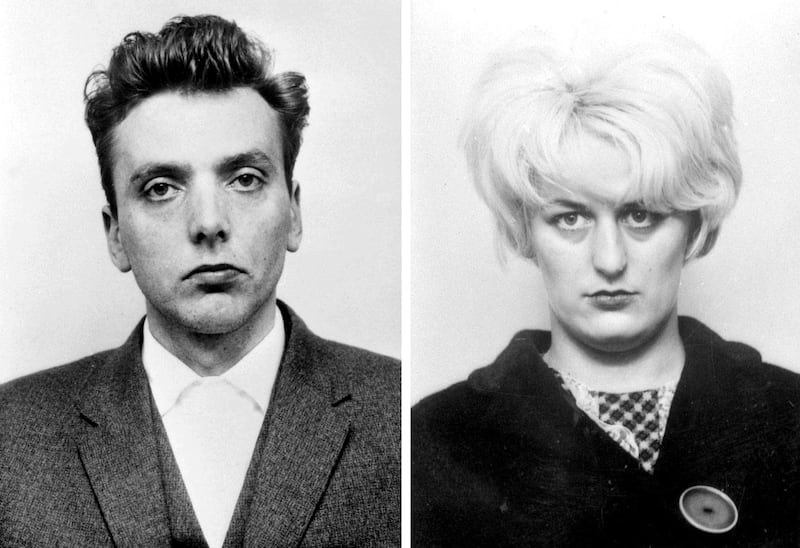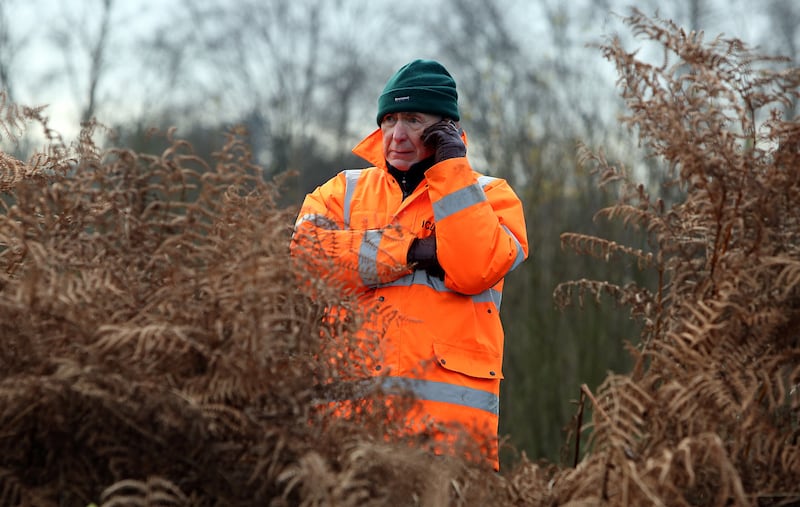Often the first sign is a shout from the digger driver.
On peat, they must use lightweight machines with wide tracks and, at the “business end”, a ditching bucket, which has a smooth-edged blade rather than teeth. From their vantage point two metres up, they watch intently as they slice through the bog.
“You might just touch the top of the grave and you can see instantly there’s something different,” says Geoff Knupfer.
Until his retirement earlier this year, Knupfer was the lead forensic investigator with the Independent Commission for the Location of Victims’ Remains (ICLVR), which searches for the remains of the Disappeared.
READ MORE
Set up in 1999 as a result of the Belfast Agreement, its job is to find the bodies of people who were murdered and secretly buried by republican paramilitaries during the Troubles.
When a body is found, “it’s just one of the most fantastic moments ever,” he says, smiling broadly.
“You know you’ve been successful, the process has worked, but of course it’s also tinged with this thing that we’re also confirming to the family that their loved one was murdered.
“The upside is we’re going to be able to return the remains to them.”
So far, 13 have been found; and four – Joe Lynskey, Seamus Maguire, Robert Nairac and Columba McVeigh, who was abducted 48 years ago this week, remain missing.
Last year, investigators began a fresh search for Columba McVeigh at Bragan Bog near Emyvale in Co Monaghan. Returning to the site on his anniversary, his sister Dympna Kerr reiterated the family’s longstanding plea for information to allow them to fulfil a deathbed promise to their mother.

“All we want,” she said, “is to bring Columba home. To have the wake. To bring him to the cemetery in Donaghmore and lay him to a final rest beside our mum and dad.”
Today, Columba’s name, inscribed on a metal tag, is one of many hanging from a tree in the Wave Trauma Centre’s Garden of Remembrance in Belfast. Every time the breeze blows, they tinkle like wind chimes.
The centre has been supporting the families of the Disappeared from the outset. It is here that Knupfer, a former detective with the serious crime squad in Manchester, chooses to meet The Irish Times on his first trip back to Northern Ireland – “his second home” – since his retirement in March at the age of 75.
His expertise in forensic archaeology was built hands-on, in the search for two of the children killed by the Moors Murderers, Ian Brady and Myra Hindley.
He was told: ‘Throw away the pointing trowels, you need buckets, spades, wheelbarrows. You’re not looking for archaeological exhibits, you’re looking for bodies.’
Tasked with reviewing the original investigation in the 1980s, Knupfer was eventually able to link two victims – 16-year-old Pauline Reade and 12-year-old Keith Bennett – to Brady and Hindley, and to determine that their bodies were “probably buried in two given points”.
As with the Disappeared, he says, “it’s an information-led, or intelligence-led search, as opposed to wild searching”.
The breakthrough came when the search team asked themselves “the time of day … we knew it was evening, but what light was left? If it was daylight, they couldn’t have buried her here, because it can be seen from the road”.

They asked Hindley. “She said, ‘it was just going dusk, I remember looking across the valley and seeing this V of the hills on the other side of the valley’,” Knupfer recalls.
“We went back the next day and there was only one area where we could actually see the V that she described, and it was right and we found Pauline Reade a few days later.”
Initially approached by the Irish government to make recommendations on how the work of the commission might be taken forward, he was in 2005 – “to my complete astonishment” – offered the job of lead investigator at the ICLVR.
“I thought there’d be perhaps two or three years’ work…to imagine I’d still be in Ireland 18 years on just never seriously entered my head,” he adds. “As the years went on, it just became life.”

As a detective, Knupfer learned to “compartmentalise stuff, leaving this stuff at work and going home”. When searching for the Disappeared, he says, “I’m simply thinking about resolving it for the families, the positive consequences rather than the negative”.
He has come across former paramilitaries who have “moved heaven and earth to resolve these outstanding cases…there have been genuine cases of people who were really, really trying to help”.
At a “personal level,” he says, some of them “were doing it because that is what the organisation wanted of them…but also because it cleared their conscience.
“We’ve met people over the years who were deeply troubled now by what had gone on then if that makes sense, [they were] probably young people in those days doing what they were told.
“It’s not for me to say whether it haunts them now, I don’t know, but certainly some were troubled by it.”
The current search for Columba McVeigh is drawing to a close. He adds that “we’ve never had an accurate or presumed accurate burial location” for Robert Nairac or Seamus Maguire.
“We know what happened, we’ve been told what happened, what took place, but exactly when and by who and where remains unknown,” he says. “Joe Lynskey we know an awful lot about, we know what happened, how it happened, we don’t know where he is.”
One of the challenges is that the passage of time means many relatives and those involved in the disappearances are now dead. However, Knupfer stresses, “we’re as sure as we can be that people didn’t just die without passing on sufficient information to give us a better location than we have now”.
He repeats a plea he has issued many times before. “Unless people come and tell us what they know, we will never find these outstanding cases.”
When he started out, Knupfer felt “we’ll be lucky if we find two or three.” Now, looking back, “in terms of the various commissions that were established [after the Belfast Agreement], it’s been one of the most successful ones, if not the most successful, albeit the job isn’t finished yet.
“We’re largely trusted, no information has ever leaked out, nobody’s ever been prosecuted…and there are examples around the world of other organisations, other governments, other bodies, taking on this model,” not least in Cyprus, where “the model is the Irish model”.
Knupfer admits he is still getting used to retirement, and “can’t resist” following events in Northern Ireland.
“I love being here, I love the people, I love the country…I just wish everybody well. How we reconcile these irreconcilable issues I don’t know…but Ireland isn’t the only place in the world where these issues happen and have to be resolved.”
He says he does not know enough about the ICRIR – the controversial new body set up by the UK government to address the legacy of the Troubles, which will offer a conditional amnesty to perpetrators – to make informed comment. But, he adds, the difference is the families “signed up” to the ICLVR beforehand, “knowing full well it’s a compromise, that they might get their loved ones returned to them but nobody’s going to be prosecuted for it”.
“That’s how it works and why it works and I think with the ICRIR, imposing a structure on people isn’t necessarily the way.”
His firm belief is that the “legacy” of the North’s past, as it is termed, must be dealt with. “Of course, whatever that entails…getting people on board is the important bit.”
Will there come a day when the rest of those missing are no longer Disappeared, but found? “I think we can all say it’s possible. Likelihood – I don’t know. That’s a different question altogether.
“But it would be the most wonderful day ever, wouldn’t it?”
Anyone with information can contact the ICLVR on 00800-55585500 or +353 1 602 8655, via email to Secretary@iclvr.ie or by post to ICLVR PO Box 10827. CrimeStoppers can be contacted on 0800 555 111 and the untraceable anonymous online form is at www.crimestoppers-uk.org.
There is a reward for information which leads to the discovery of those still missing.



















